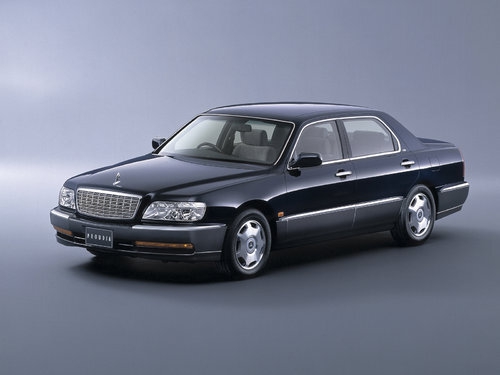Mitsubishi Proudia 1 generation 12.1999 - 12.2001

12.1999 - 12.2001
GH-S32A, GH-S33A
1 generation
Choose parts group:
Choose featured list:
Best-selling partsSedan
For a long time, the flagship of cars manufactured under the Mitsubishi brand was the Debonair model. However, in 1999, this honorable mission was “delegated” to a car called the Proudia. In fact, this new machine was developed and put into production on the basis of the latest generation Debonair. In other words, the Proudia should be seen as a continuation of the Debonair lineup. The name Proudia comes from the merger of two morphemes: “prou” - from the English word proud, that is, “pride”, and “dia” - from the English equivalent to the Japanese word “bishi” (the word “Mitsubishi” translates as “three diamonds”), then there is a "diamond". The car was developed in conjunction with the South Korean company Hyundai. Accordingly, a joint release of this machine was organized. In the catalog of cars manufactured by Hyundai, the model was listed as Equus. The car has a length of more than 5 meters and is part of a group of large sedans. It is interesting that at the time the model appeared on the domestic Japanese market, all sedans of the "large" group were no more than 5 meters in length, so in a sense this car is a kind of challenge to established traditions. The car was designed to serve VIPs, and everything seemed to be perfected in it. But it seems that this representative model was of no interest to anyone other than the management of related Mitsubishi companies. However, like the previous VIP-model Mitsubishi Debonair.
The car was equipped with either a 6-cylinder engine of 3.5 liters or an 8-cylinder engine, the working volume of which was 4.5 liters, both with a V-shaped arrangement of cylinders. The 4-seater version of the car with a limousine body extended by 300 mm got its own name Mitsubishi Dignity.
The car was equipped with either a 6-cylinder engine of 3.5 liters or an 8-cylinder engine, the working volume of which was 4.5 liters, both with a V-shaped arrangement of cylinders. The 4-seater version of the car with a limousine body extended by 300 mm got its own name Mitsubishi Dignity.



